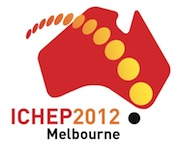Speaker
Prof.
Yury Kolomensky
(UC Berkeley & LBNL (US))
Description
We search for a light CP-odd Higgs boson (A0) that arises in non-minimal supersymmetric extensions of the Standard Model and naturally couples strongly to bottom quarks. The search is conducted using radiative di-muon and di-tau decays of the Upsilon(1S) meson. We use BABAR’s large data sets of (92.8 +- 0.8) million Upsilon(2S) and (116.8 +- 1.0) million Upsilon(3S) decays to identify Upsilon(1S) production via the decay Upsilon(2S,3S) --> pi+pi- Upsilon(1S). This yields a high-purity sample with a Higgs-search sensitivity similar to that of radiative Upsilon(2S) and Upsilon(3S) decays. We set stringent limits on the product of branching ratios Br(Upsilon(1S) --> gamma A0) x B(A0 --> l+l-) where l = mu or tau, as well as on the effective coupling of the b-quark to the A0. Depending on the parameters of the model, the Higgs may decay predominantly into hadrons. We also present results of a search for a CP-odd Higgs boson produced in radiative Upsilon(2S) or Upsilon(3S) decays and decaying into hadrons. Our results severely restrict the available parameter space for models predicting light Higgs states.
Authors
(A. Soffer) BABAR Collaboration
(SLAC)
Prof.
Yury Kolomensky
(UC Berkeley & LBNL (US))
